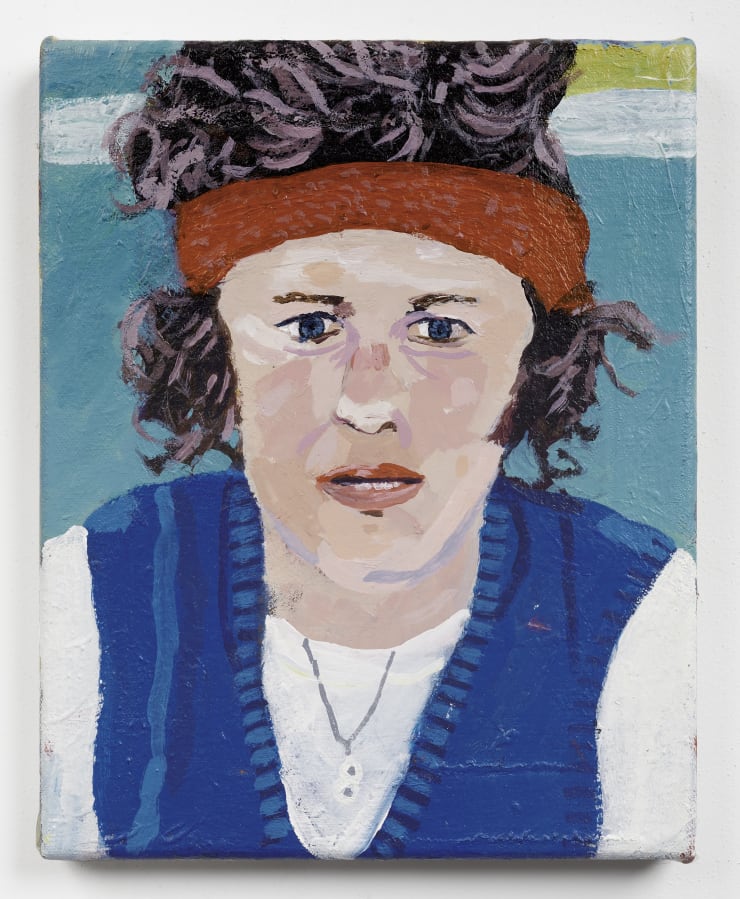-
Shaun Ellison - Hit & Miss
September 10 - October 1 -
-
-
-
I grew up in Durban, South Africa and when I was 19, I moved to the U.S. to play tennis for the University of Louisiana Lafayette. During my second year in college, while teaching tennis at the Greenwich field club in Connecticut, I had the opportunity to visit avid collectors Edith and Roy Simpson. They had artworks by some of the biggest artists you could imagine, from David Hockney to Max Beckmann, Keith Haring and even Jean-Michel Basquiat. It’s a memory I still think back to this day. A true moment of clarity where the trivial was drowned out by pure experience. Those vivid paintings, especially Hockney and Basquiat, hanging in the Simpson’s house brought me back to my childhood drawing, and a sense of creativity that at the time I was distanced from. The very next day, I began drawing again, and finding myself as an artist. I began connecting with other artists and exploring and making art in my free time. Although, playing tennis for a division one school in the country didn’t leave much time for anything else. In 2008, I moved to New York City to study art, mostly drawing at the School of Visual Arts, the Art Students League, and The Studio School. At the same time, I taught tennis at the John McEnroe Tennis Academy on Randall’s Island.
-
A year later, I had rented my first studio. I’ve always thought of the canvas as a stage, which, I think holds true to what the court and arena represent to the tennis player. I’ve enjoyed using the tennis court as a place where different elements within the stadium can blend. The surface of the court, the game at hand, and the interaction of the crowd create a theatre of play on the canvas. I enjoy moving between specificity and non-specificity—flipping the conversation, leaving some areas more unfinished and open to interpretation. Balance is also important, so in addition, I paint signs and symbols to bring a note of familiarity and relatable imagery. In my paintings, I am always moving between the natural world and memory. Using memory allows certain freedoms while creating shapes and pulling from the color spectrum. These paintings have in many ways felt like a celebration of a sport I love and know so well. I often begin my paintings using photographs and then move away from the images through the process of responding formally. My work feels similar to collage, as I juxtapose one image I find with another. My first painting in this series was of the French Open. I enjoyed assembling the crowd and the form of the stands. In this painting, I left the crowd anonymous—choosing to investigate gesture and posture while leaving out the expressions on their faces.
-
This created an abstraction I liked. I enjoy seeing crowds of people as a formal element—the patterns of color and shapes that they create as a mass of people. As much as I have loved the game of tennis, it has also been a source of some pain for me. I had hoped to play professionally but didn’t make it. It has taken some time to accept that failed dream. At the same time, I always recoiled against certain aspects of the game—the idea of myself as a jock, the tradition of white privilege. Painting this series has helped me work through some of those old negative associations, to see tennis more plainly, for what it is. The sport has evolved, as I have over the years. It has become more diverse and more accessible. It is an incredibly entertaining and fulfilling sport to watch and play. I also appreciate it as a means of learning about myself while connecting with the people I play with. From my earlier days when teaching tennis paid for art classes and helped me see movement and expression that I translated to canvas, the sport and art have always worked in tandem. Now in this series, there has been a literal realization of this idiosyncratic partnership.
-
-
-
Works
























